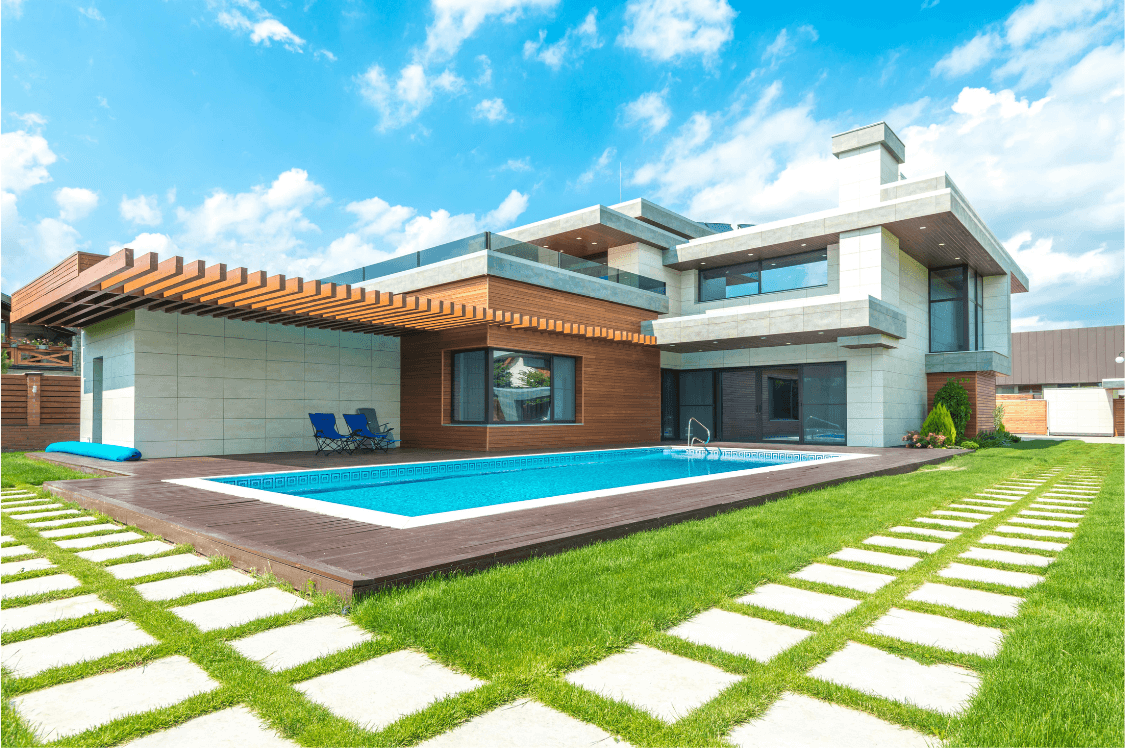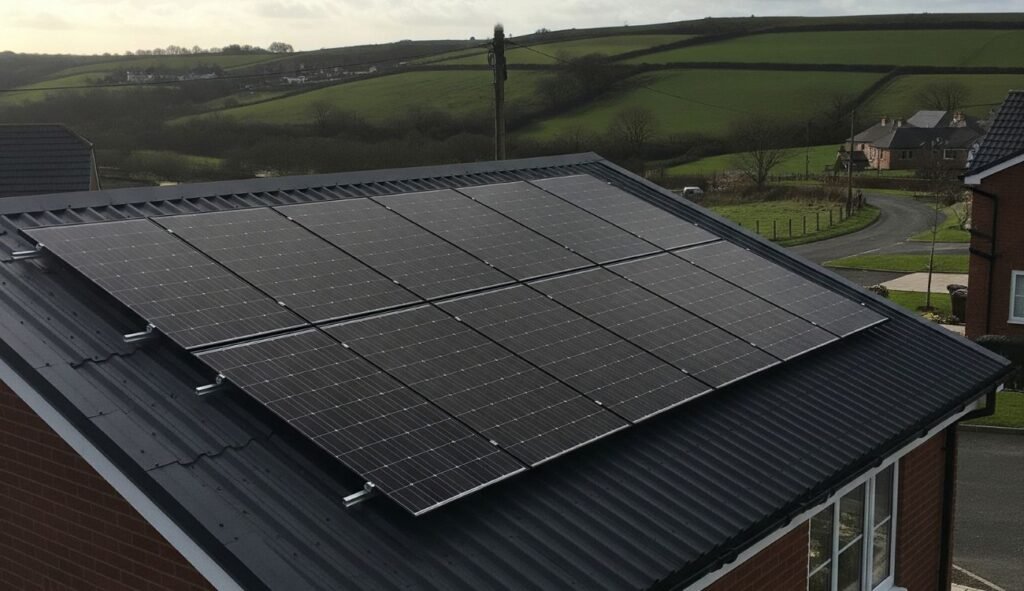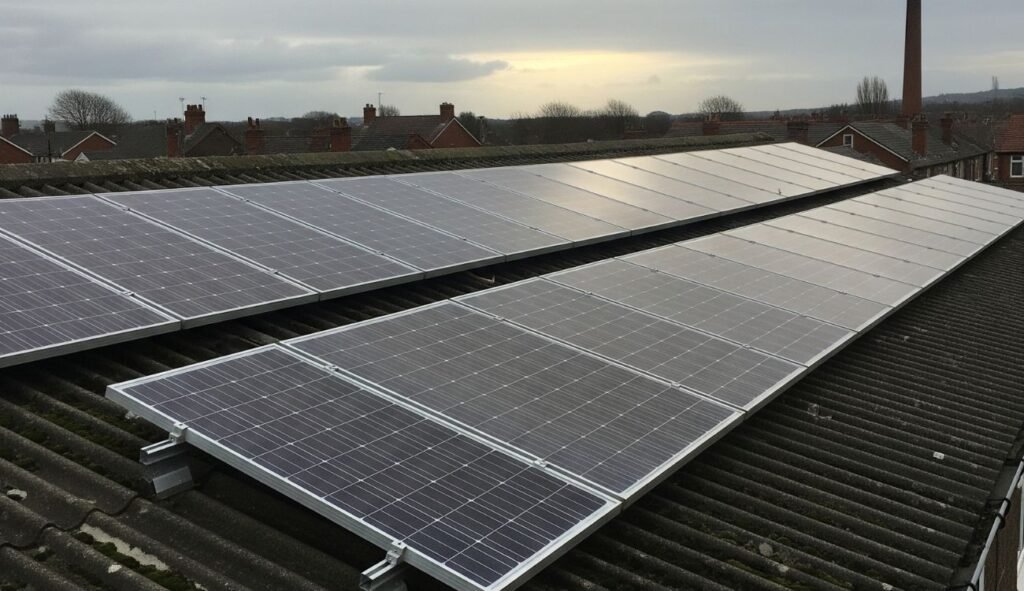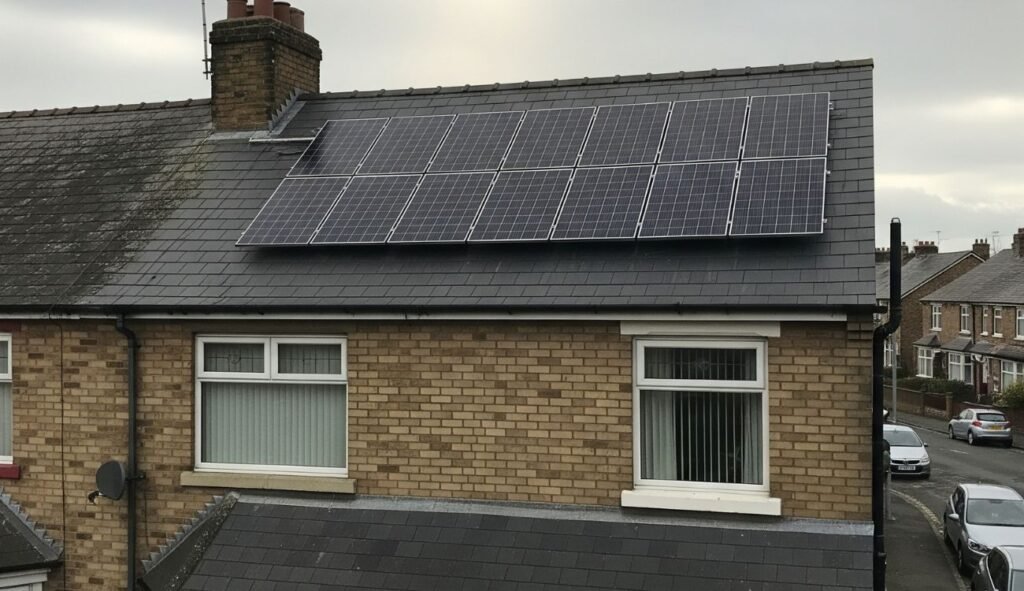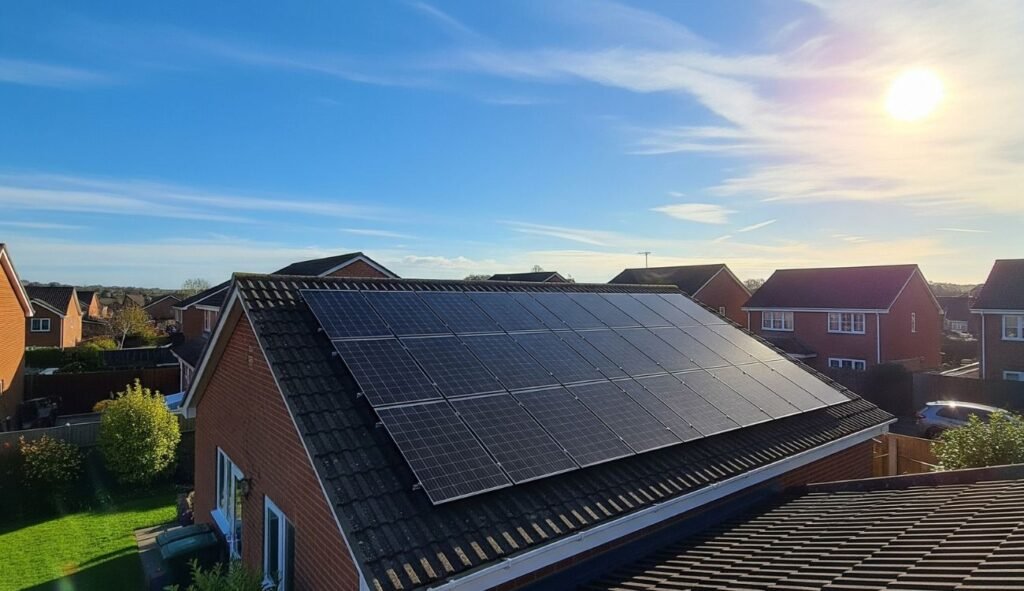Heating a swimming pool with solar panels is an eco-friendly and cost-effective solution that more UK homeowners, landlords, and commercial facilities are exploring.
If you’re wondering how many solar panels are needed to heat a swimming pool, you’re not alone.
This guide will help you get a better understanding of how many solar panels are needed to heat a swimming pool, and guide you in the right direction with making an informed decision.
We will discuss all the key considerations, from pool size to energy requirements.
Whether you own a hotel, leisure centre, or a private residence, understanding your options can save you thousands in energy costs over time.
How Do You Determine How Many Solar Panels You Need for Your Swimming Pool?
The number of solar panels required depends primarily on the size of your pool, your location (sunlight hours), and how long you want the pool heated each day.
On average, a solar pool heating system needs a collector area that is 50-100% of the surface area of your pool.
For example, if you have a 30m² swimming pool, you might need between 15m² to 30m² of solar panel coverage.
A general rule of thumb: You need around 4 to 6kWh per day per 10m² of pool surface area to maintain comfortable temperatures.
How many solar panels are needed for residential swimming pools?
The number of solar panels you need depends on your pool’s surface area, desired temperature, and how long you’d like it heated.
- Rule of thumb: Size the collector area to 50–100% of the pool’s surface area.
- Residential usage often targets ~75% coverage for reliable heating without excessive panels.
| Pool Size | Surface Area (m²) | Collector Coverage Target | Daily Heat Requirement (kWh) | Recommended No. of Panels (1.6 m², 400 W) |
|---|---|---|---|---|
| Small (e.g., plunge or spa pool) | 15 m² | 60–80% (9–12 m²) | ~6–10 kWh | 5–8 panels |
| Medium (e.g., standard backyard pool) | 30 m² | 70–100% (21–30 m²) | ~12–20 kWh | 13–19 panels |
| Large (e.g., luxury or lap pool) | 50 m² | 75–100% (38–50 m²) | ~18–30 kWh | 24–31 panels |
Assumes optimal solar orientation, average UK solar radiation (3.5 kWh/m²/day), and good insulation such as a solar cover.
How many solar panels are needed for hotels & leisure centres pools?
Commercial pools have large surface areas and prolonged usage, so systems must scale accordingly:
- Collector coverage: Aim for 75–100%+ of surface area.
- Panel count: For a 100 m² pool, you’ll need ~75–100 m² of collectors (~47–62 panels).
- Renewable heat eligibility: Commercial solar thermal systems may qualify under Ofgem’s Non‑Domestic RHI, where pool heating is eligible for municipal/commercial use.
- System design: Consider flat, tilt-mounted, or ground arrays for large scale.
- Commercial ROI – Investing in solar panels can lead to significant long-term savings on energy costs for hotels, leisure centres, and other commercial facilities. Plus, the enhanced green credentials can boost your reputation with eco-conscious customers.
For a deeper understanding, see our guide on whether commercial solar panels are worth it.
| Facility Type | Pool Surface Area (m²) | Collector Coverage Target | Daily Heat Requirement (kWh) | Recommended No. of Panels (1.6 m², 400 W) |
|---|---|---|---|---|
| Small Hotel or Gym | 60 m² | ~30–40 kWh | 28–38 panels | 28–38 panels |
| Mid-size Leisure Centre | 100 m² | ~50–70 kWh | 50–62 panels | 50–62 panels |
| Large Public Pool Facility | 150–200 m² | ~100–140 kWh | 85–125 panels | 85–125 panels |
Figures adjusted for higher usage frequency, longer operating hours, and larger water volumes. Assumes flat/tilt roof or ground-mounted panels.
If you’re planning a commercial installation in Tyne & Wear or Newcastle, Future Heat can design and install a scalable, compliant system. Request a free solar panel installation quote today.
What Factors Affect Solar Pool Heating Performance?
Solar pool heating can be optimised by considering multiple factors:
- Location & weather: North East England’s sunlight levels are moderate; sizing systems toward the higher end of the coverage range helps.
- Pool insulation: Using solar covers or insulated liners reduces heat loss. This can boost system efficiency.
- Orientation & mounting type: If roof space is limited, look into horizontal vs vertical solar panel installation to maximise sunlight capture.
- Integration with PV and battery – Using solar PV to power a heat pump alongside battery storage can deliver consistent, year-round pool heating. However, selecting the right size solar battery is crucial to ensure your energy demands are fully met.
- Backup systems: Supplement with heat pumps or combi boilers. Our guide on using solar panels with a combi boiler provides a clear explanation of how these two systems can work together efficiently.
How Much Roof Space Is Needed to Heat a Swimming Pool With Solar Panels?
Each 400W solar panel typically takes up about 1.6m². So, if you require 10 panels, you’ll need at least 16m² of unshaded, south-facing roof or ground space.
If you’re unsure how much you can accommodate, we recommend reading our guide on how many solar panels can fit on your roof.
We’re also often asked: can you install solar panels on flat roofs? The answer is yes.
Flat roofs can be an excellent option when angled mounting systems are used to optimise sun exposure and ensure proper drainage.
Are Solar Panels Reliable for Heating Pools Year-Round in the UK?
Yes, but with caveats. In summer months, solar panels perform optimally. In winter, performance dips due to shorter daylight hours.
For year-round usage, consider integrating a hybrid system using a heat pump for backup.
Our article on how solar panels work in winter offers a deeper dive.
Timing your installation can also make a difference in performance and savings. Read our guide on when is the best time to install solar panels.
Can Commercial Properties Like Hotels and Leisure Centres Benefit From Solar Pool Heating?
Absolutely. Leisure centres, spas, hotels, and fitness clubs often operate heated pools year-round, resulting in significant energy costs.
Solar panels can slash these operational expenses while improving sustainability credentials.
In fact, systems with higher output, for example, those that can generate 1 megawatt or more are often tailored for commercial settings.
For further insight, read how many solar panels needed to generate 1 megawatt.
If you’re a business based in Tyne and Wear, Newcastle or the wider North East, Future Heat specialises in commercial solar installations.
Request a custom solar panel installation quote today and take the first step toward significant long-term savings.
What Type of Solar Panels Are Best for Pool Heating?
Flat-plate solar collectors and evacuated tube collectors are the most commonly used systems.
For UK conditions, flat-plate collectors are generally recommended for pool heating due to their cost-efficiency and performance in moderate climates.
However, commercial setups might prefer evacuated tube systems for higher efficiency.
How to Choose the Right Solar Panel Installation Company
When investing in solar panels to heat a swimming pool, choosing the right installer is just as important as selecting the right equipment. Here are key things to consider:
- Experience with pool heating systems – Look for installers who understand the specific demands of pool heating, including seasonal usage and system sizing.
- Accreditation and certification – Ensure the company is MCS-certified and a member of trusted bodies like the Renewable Energy Consumer Code (RECC).
- Site-specific assessments – A reputable company should offer a tailored site visit to assess roof space, orientation, shading, and energy needs.
- Transparency on cost and output – Your installer should explain projected kWh output, system size, and whether you may benefit from solar battery storage.
- Aftercare and warranty – Choose a provider offering long-term product and performance guarantees, plus responsive customer support.
For a deeper breakdown, read our complete guide on how to choose the right solar panel installer.
Can you install solar panels yourself? While some homeowners consider DIY installation, we strongly recommend using professionals, especially for something as intricate as pool heating.
Frequently Asked Questions (FAQs)
Depending on usage and local conditions, most users recover their investment within 5 to 8 years. Commercial properties can see even faster returns.
Not quite. Solar heating typically raises temperatures by 5-10°C depending on system design and sunlight availability. Supplementary heating may be needed for higher temps.
Generally, no planning permission is required for domestic solar installations in the UK. Commercial installs may require additional approval.
Yes, especially if integrated with a heat pump. Indoor pools benefit from consistent ambient conditions, improving efficiency.
While the Feed-in Tariff has ended, you can benefit from the Smart Export Guarantee (SEG).
Our Verdict
Heating your swimming pool with solar panels is an efficient, eco-conscious choice for UK homeowners, landlords, and commercial facilities. The number of solar panels you’ll need depends on various factors such as pool size, usage habits, and energy goals.
By considering your installation options, working with a trusted local installer like Future Heat, and referencing expert resources, you can confidently invest in a system tailored to your needs.
With solar energy becoming increasingly popular, more people are curious about its potential than ever before, asking questions like how many solar panels do I need to run a hot tub, or how many panels are needed to power a refrigerator.
With interest and awareness growing rapidly, there’s never been a better time to invest in solar panels.
Myles Robinson is a seasoned expert in the boiler and home improvement industry, with over a decade of experience. He is deeply committed to environmental sustainability, actively promoting energy-efficient heating solutions to help households reduce their carbon footprint. By combining industry expertise with a dedication to environmental responsibility, Myles continues to lead efforts in transforming home heating practices towards a more sustainable future.

